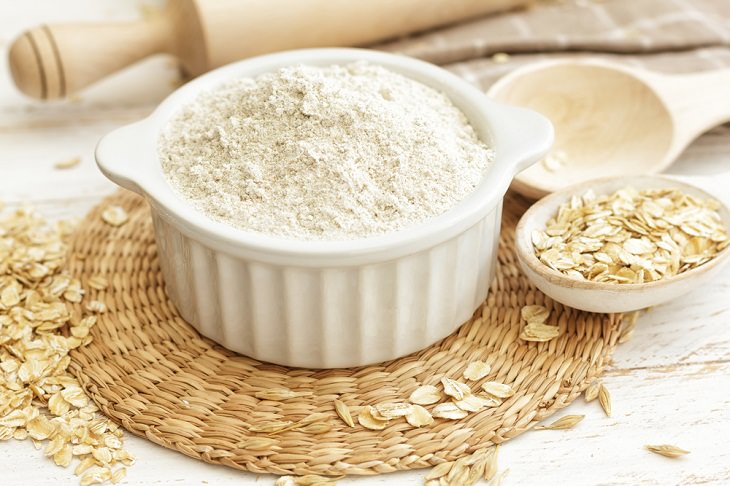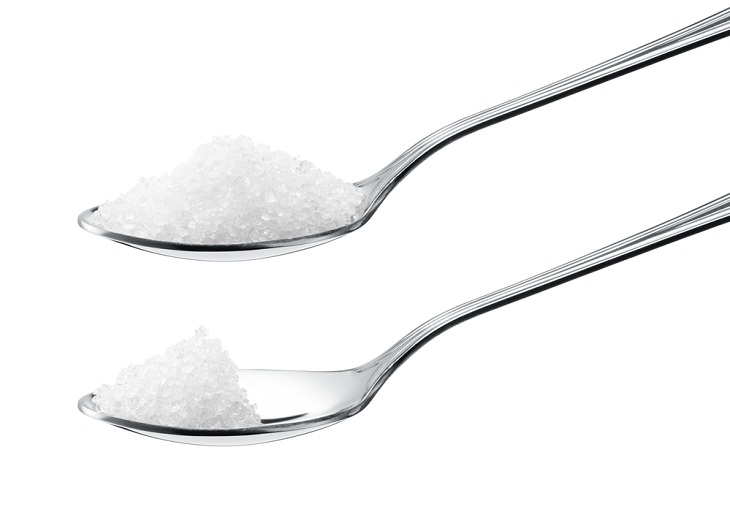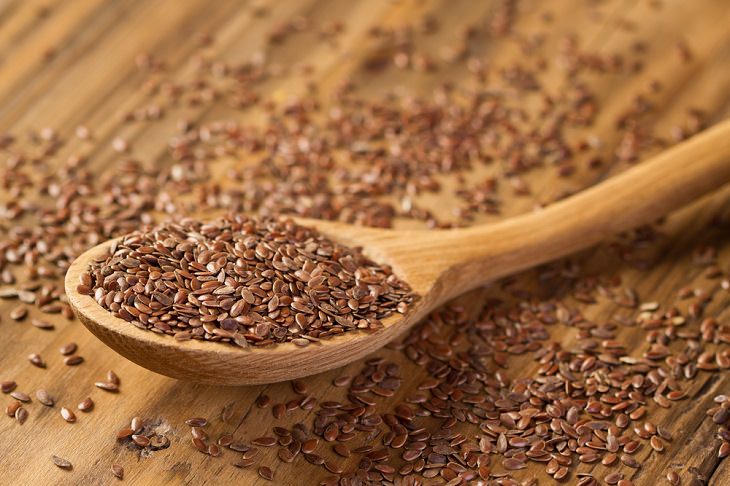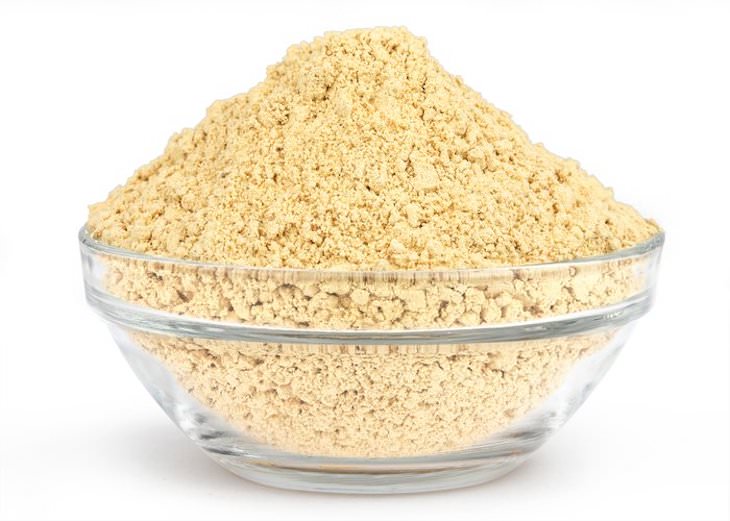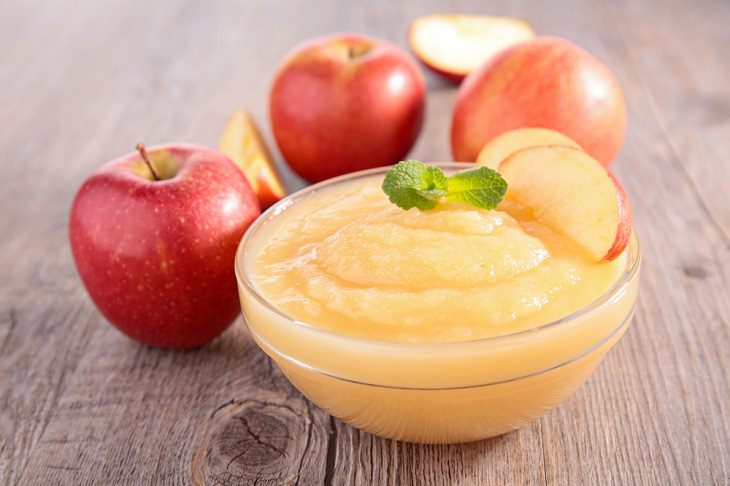Instead of going for white flour, try using whole grain flour. It will increase the fiber content of your baking goods substantially and will make them much more filling. Whole wheat flour, too, is a good alternative as it packs in more fiber than all-purpose flour.
If these aren’t viable or don’t suit your taste, you can try gluten-free choices like almond and oat flour. Oat flour, in particular, is terrific for adding sweetness to cookies, muffins, and crusts. However, bear in mind that they can hamper the texture of your baked goods if used improperly and make them a bit crumbly or chewy.
Tip: Oat flour is significantly lighter than all-purpose and whole wheat flour. 1 1/4 cup oats will yield approximately 1 cup flour. To help your bread rise, add some more yeast.
2. Cut down the sugar considerably
One of the best ways to reduce the calorie content in your baked goods is to cut down on the sugar considerably. Ideally, reducing the amount of sugar that the recipes generally require by one-fourth would be good. You might feel that cutting down sugar by such a drastic quantity would change the taste of the final product. It might take some getting used to, but after a couple of times, you won't notice much of a difference anymore. Most importantly, it will be so much better for your health.
3. Use flax seeds as a substitute for eggs
Most of us can’t imagine baking without eggs as they help baked goods rise and become light and fluffy. However, if you want to cut cholesterol or fat, then substituting eggs with options like chia seeds or flaxseeds would be a good idea. Flaxseeds contain a good amount of fiber, protein, and omega-3 fatty acids, and when mixed with water, they make for a great egg alternative. For best results, just mix one tablespoon of ground flaxseed with three tablespoons of water for each egg.
4. Use peanut butter powder
Peanut butter is a yummy addition to many kinds of cookies, bars, cakes, and muffins. However, if you want the deliciousness of peanut butter minus plenty of fats, then peanut butter powder will be an excellent replacement. It’s made by pressing out most of the natural oils from roasted peanuts and then grinding them into a fine powder. The resulting powder contains 85% fewer calories from fat but is just as flavorful as peanut butter. Use peanut butter powder for 1/3 of the flour for best results.
5. Try some healthful substitutes for butter and oil
If you’re looking to reduce the amount of butter or oil in a baked recipe, then you have many healthful choices. For starters, coconut oil is a suitable butter substitute in baking. You can use it as a 1:1 replacement for butter: if a recipe calls for ½ cup butter, use ½ cup coconut oil instead. It may change the flavor slightly but works excellently for recipes that require rich chocolate flavors. Coconut oil would also be ideal for creating a flakier crust in pie crusts.
Applesauce is another wonderful option that can be used as a substitute for both butter and oil in baking. It works really well for cake-like recipes while cutting the calories and increasing the nutritional content. Just replace half the amount of butter with applesauce and you'll be good.
Pumpkin purée can replace butter in most recipes and will be very healthy in baking as it's loaded with vitamin A and other nutrients. However, pumpkin purée can be quite watery so just use 3/4 of the amount you use for butter.
Lastly, you can use thick and creamy Greek yogurt instead of oil in your baking recipes. It is full of proteins and has less sugar than regular yogurt. Keep in mind, however, that nonfat yogurt may result in a crumbly and dry product. So, try and go for full-fat yogurt to help keep your baked goods moist.
6. Add spices without all the extra calories
Adding warm spices such as cinnamon, nutmeg, or ginger to your baked goods can really perk up their flavor. The best thing about these spices is that you won’t then need to rely on added sugar or oil. In fact, with the use of spices, you can cut the sugar your baked recipe needs by almost half. Cinnamon works perfectly for pancakes while nutmeg is great for muffins. Cocoa powder, meanwhile, can be added to cookie dough.
To make the best use of the spices in your baked goods, just double up their amount that's generally used. You can even get creative by adding allspice or almond extracts to boost the sweetness without the need of adding any sugar.
7. Keep an eye on portion control. Try traybake options.
Controlling your portion size is also an important step in making baking a part of a balanced diet. How many of us can resist the temptation of having that one extra cookie or another slice of our favorite cake? What you can do to control this is to make ‘mini’ versions of the baked items so that even if you gobble up two or three, you won’t be taking in too much fat or calorie per portion.
Another useful tip is to go for traybake options as they can easily be cut into small squares. For those who may not know, traybake is a type of cake (or similar sweet food) that is baked in a tray, cut into small squares, and served as a biscuit, bar, or cake. Some of the healthiest traybake cake recipes are carrot cake, gluten-free banana flapjack, low-fat peanut butter bar, and chia seeds bar.
Watch this video to learn how to make traybake cakes:
8. Use cacao nibs
Cacao nibs are small pieces of crushed cacao beans that have been fermented, dried, and usually roasted. They have a bitter, chocolatey flavor and are loaded with an impressive amount of nutrients, antioxidants, and powerful plant compounds. Nutritionists say that cocoa nibs pack way more nutritional benefits than cocoa. These little delights can be used in baked goods like muffins and pancakes as cacao nibs are a common dairy-free substitute for chocolate chips.
What’s great is that cocoa nibs are already chipped and hence will add that extra crunch to your baked goodies. Moreover, they will also suppress your sugar cravings without having to add any extra sugar.
Share these great tips with others who love baking!

